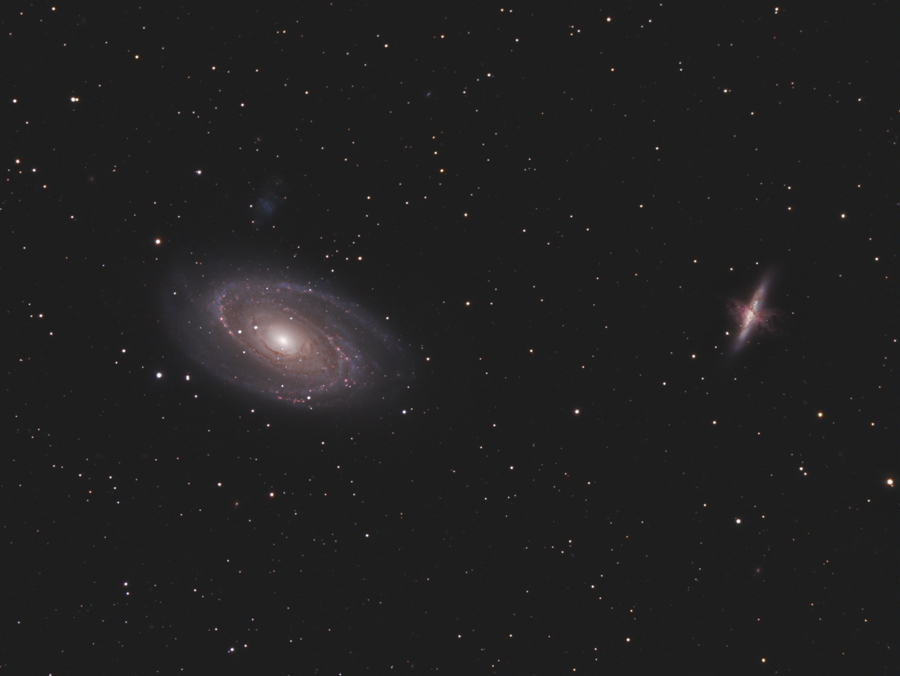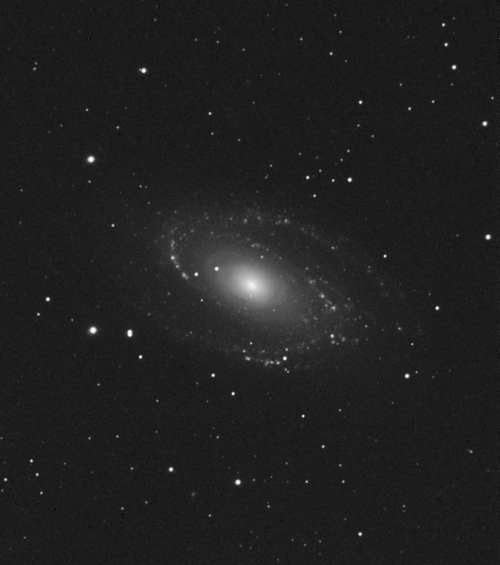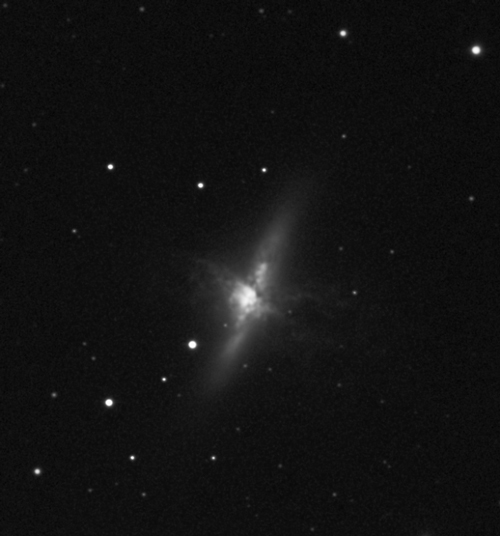© 2021 Michael A. Siniscalchi
Messiers 81 & 82
Galaxies in Ursa Major
M81 RA: 09h 55m 32s Dec: +69° 03' 55" Distance - 12 mly Size - 90000 ly
M82 RA: 09h 55m 52s Dec: +69° 40' 47" Distance - 12 mly Size - 37000 ly
Mouse over for annotation
Click on image for larger size.
From Wikipedia
Messier 81 (also known as NGC 3031 or Bode's Galaxy) is a grand design spiral galaxy about 12 million light-years away, with a diameter of 90,000 light years, in the constellation Ursa Major.
Directly above M81 is Holmberg IX which is a dwarf irregular galaxy. The galaxy is named after Erik Holmberg who first described it. Based on the observed age distribution of stars it contains it is thought to have formed within the last 200 Myr making it the youngest nearby galaxy.
M82 was first discovered by Johann Elert Bode on 31 December 1774 together with M81. He described it as a "nebulous patch", about 0.75 deg away from M81 and "very pale and of elongated shape". In 1779, Pierre Méchain independently rediscovered both galaxies and reported them to Charles Messier, who added them to his catalog. Messier 82 (also known as NGC 3034, Cigar Galaxy or M82) is a starburst galaxy approximately 12 million light-years away in the constellation Ursa Major. A member of the M81 Group, it is about five times more luminous than the whole Milky Way and has a center one hundred times more luminous than our galaxy's center.
M82 is being physically affected by its larger neighbor, the spiral M81. Tidal forces caused by gravity have deformed M82, a process that started about 100 million years ago. This interaction has caused star formation to increase tenfold compared to "normal" galaxies.
M81 in Hydrogen Alpha (Ha) initial stretch
M82 in Hydrogen Alpha (Ha) initial stretch prior to deconvolution processing


